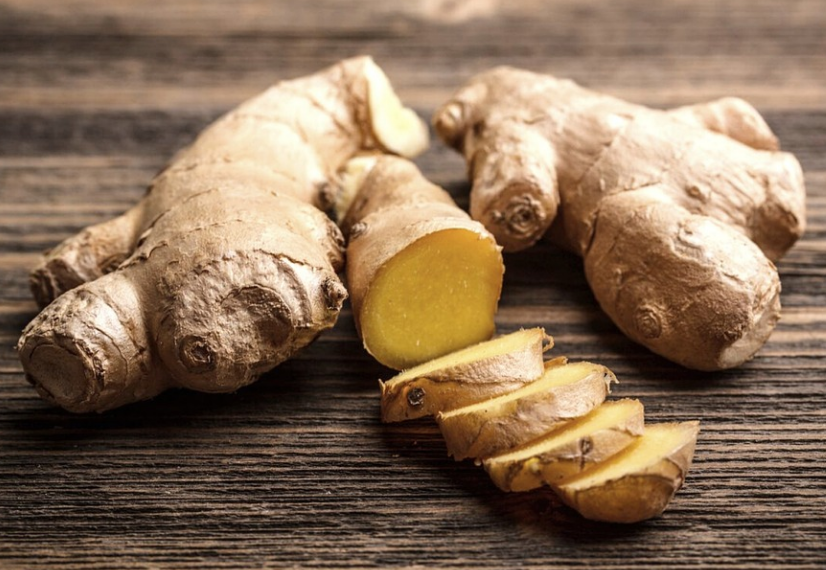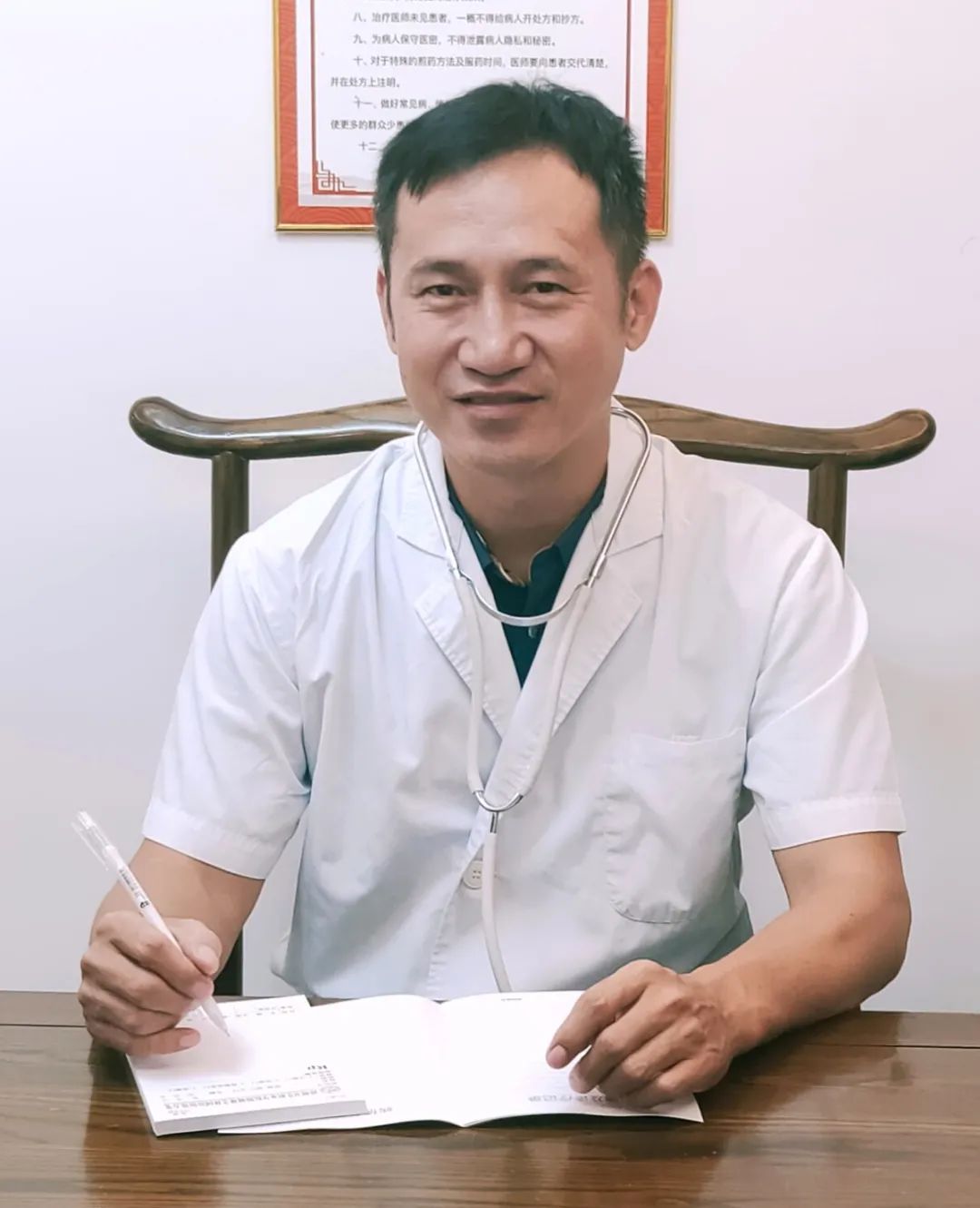Ginger is not only a seasoning but also an important medicinal herb in Traditional Chinese Medicine (TCM). The earliest record of ginger as a medicinal substance is found in the “Shennong Bencao Jing,” which states that dried ginger (gan jiang) “is used for chest fullness, cough, counterflow of qi, warming the middle, stopping bleeding, inducing sweating, expelling wind-dampness, and treating diarrhea.” Over time, many medicinal preparations derived from ginger have emerged, each with different effects. This article introduces how TCM utilizes ginger, following the order of its medicinal use.
Dried Ginger (Gan Jiang)The first is dried ginger, which is recorded in the “Shennong Bencao Jing.” The effects of dried ginger include warming the middle and dispersing cold, warming yang and unblocking meridians, and warming the lungs and transforming phlegm. It is a warming interior medicine commonly used to treat cold pain in the abdomen, cough with cold phlegm, vomiting, diarrhea, and weak pulse with cold limbs.Dried ginger is often used in combination with Aconite (Fu Zi). Examples of formulas include: Li Zhong Wan, Aconite Li Zhong Wan, Si Ni Tang, Xiao Qing Long Tang, and Zhu Che Wan. Among them, Li Zhong Wan is derived from the “Shang Han Lun” and contains ginseng, Bai Zhu (White Atractylodes), roasted licorice, and dried ginger. Its effects are to warm the middle, disperse cold, tonify qi, and strengthen the spleen, used for abdominal pain and diarrhea due to spleen and stomach deficiency with cold.Aconite Li Zhong Wan, derived from the “Tai Ping Hui Min He Ji Ju Fang,” includes an additional warming herb, Aconite, enhancing its warming effects. The original text states, “It treats cold weakness of the spleen and stomach, abdominal cramping pain, vomiting, diarrhea, cholera, cold body with slight sweating, cold hands and feet, fullness in the chest, rumbling in the abdomen, persistent vomiting, and inability to eat, as well as all cold and stubborn conditions.” In the Ming Dynasty, Zhang Jingyue added symptoms such as abdominal pain after intercourse, cold extremities, and food-induced cold.Si Ni Tang, also from the “Shang Han Lun,” contains only Aconite, dried ginger, and roasted licorice, representing a formula for rescuing yang and reversing counterflow, addressing yang deficiency with cold extremities. In critical conditions, Si Ni Tang is more effective than wild ginseng.Li Zhong Wan, Aconite Li Zhong Wan, and Si Ni Tang all focus on warming the interior and dispersing cold, while Xiao Qing Long Tang, also from the “Shang Han Lun,” utilizes dried ginger for warming the lungs and transforming phlegm, used for treating exterior wind-cold with internal phlegm and cough.Fresh Ginger (Sheng Jiang)Next, we discuss fresh ginger, which is frequently used in the “Shang Han Lun.” The combination of fresh ginger and jujube is highly prevalent. Later TCM practitioners, such as Tao Hongjing, recorded in his “Ming Yi Bie Lu”: “Fresh ginger, with a spicy and slightly warm flavor, is used for treating wind-cold, headache, nasal congestion, and counterflow of qi, and it stops vomiting.” Compared to dried ginger, fresh ginger has a stronger ability to release the exterior and disperse cold, suitable for wind-cold exterior conditions, while dried ginger is more effective for warming the interior, particularly for spleen and stomach deficiency with cold.Moreover, fresh ginger can also detoxify fish and crab poison and counteract the toxicity of raw Ban Xia (Pinellia). The combination of fresh ginger and Ban Xia is a classic pairing. The “Jin Gui Yao Lue” states: “Both Ban Xia and fresh ginger juice are effective in stopping vomiting; when used together, the effect is enhanced; they also have the function of opening the appetite and harmonizing the middle. It is used for disharmony of stomach qi, vomiting, and discomfort.”The first formula in the “Shang Han Lun,” Gui Zhi Tang, used for exterior wind-cold and symptoms such as headache, fever, sweating, and aversion to wind, also employs the combination of fresh ginger and jujube.

Processed Ginger (Pao Jiang)Processed ginger is made by stir-frying dried ginger with hot sand until the surface bulges and turns brown. It is also first recorded in the “Shang Han Lun,” characterized as hot and spicy, and enters the spleen, stomach, and kidney meridians. Its effects include warming the meridians and stopping bleeding, as well as warming the middle and alleviating pain. It is mainly used for yang deficiency with blood loss, metrorrhagia, abdominal pain, and vomiting and diarrhea.The “Jin Gui Yao Lue” records the Gan Cao Gan Jiang Tang, which actually uses processed dried ginger, treating lung deficiency with cold, characterized by expectoration of foamy saliva and frequent urination; absence of cough is a key point for differential diagnosis. The original text states: “Four taels of licorice, two taels of roasted dried ginger, processed, finely chopped, boiled with three sheng of water, and reduced to one sheng and five cups, then filtered and taken warm in two doses.” Processed dried ginger is more effective than dried ginger for warming yang and maintaining the middle, but has a weaker dispersing power.Ginger Charcoal (Jiang Tan)Ginger charcoal is first recorded in the Song Dynasty, made from stir-fried ginger that has been carbonized. It is actually a classification of processed ginger, but the carbonized ginger is more inclined to stop bleeding, as charcoal itself has a significant hemostatic effect.Many TCM practitioners throughout history have discussed ginger charcoal’s hemostatic properties. For example, the “Bencao Jing Shu” states, “The mention of stopping bleeding refers to blood deficiency causing heat; heat causes reckless movement. Charcoalized dried ginger can draw various blood-tonifying herbs into the yin aspect; when blood is replenished, yin is generated, and heat recedes, preventing blood from moving recklessly.”The “National Standard for Chinese Medicine Processing” also requires that ginger charcoal be distinguished from processed ginger: “Ginger charcoal warms the meridians and stops bleeding, primarily treating vomiting, epistaxis, metrorrhagia, and yin deficiency with blood loss.”Galangal (Gao Liang Jiang)Strictly speaking, galangal is not a product of dried ginger, as it comes from the galangal plant, characterized as hot and spicy. Its effects include warming the stomach, dispersing cold, alleviating pain, and stopping vomiting. Galangal is first recorded in Tao Hongjing’s “Ming Yi Bie Lu” as a warming stomach herb. The “Bie Lu” states, “It is warm in nature and is used for sudden cold, cold counterflow in the stomach, and cholera abdominal pain.”In summary, fresh ginger, dried ginger, and processed ginger gradually increase in warming effects while decreasing in dispersing cold effects. Ginger charcoal is more focused on warming the meridians and stopping bleeding, while galangal, although a close relative, has similar effects to dried ginger but emphasizes warming the interior and dispersing cold. Dried ginger is more focused on rescuing yang and reversing counterflow, while galangal is more potent and should not be used for extended periods. Therefore, galangal is classified as a medium-grade herb by Tao Hongjing, while dried ginger is considered a superior herb.



TCM Acupuncture and Tuina Department: Xie Yibing

★ Associate Professor
★ Associate Chief Physician
Profile
Graduated from Fujian University of Traditional Chinese Medicine in 1990, with over 30 years of clinical experience.
Specialties
1. TCM Chronic Rhinitis and Cough Specialty: Utilizing rhinitis ointment and floating needle therapy to comprehensively treat various acute and chronic rhinitis, allergic rhinitis, and sinusitis. Also treating chronic cough, adenoid hypertrophy, chronic pharyngitis, and asthma.
2. TCM Yang-Tonifying Acupuncture and Qi Guidance: a. Various constitution adjustments: treating female yang deficiency with cold uterus, cold limbs, menstrual pain, headache, and infertility; treating qi and blood deficiency with symptoms such as fatigue, easy to catch colds, prolonged illness, and hair loss; b. Detoxifying and reducing fat: treating abdominal obesity, primary hypertension (grade 1, 2), hyperlipidemia, gout, etc., and treating chronic urticaria, eczema, neurodermatitis, and acne.
3. TCM Pediatric Tuina: treating pediatric colds, coughs, sore throat, anorexia, food stagnation, enuresis, diarrhea, and torticollis.
4. TCM Pain Specialty: utilizing rapid effective muscle relaxation and pain relief techniques, floating needles, and buried threads to treat various acute and chronic soft tissue injuries, pain caused by degenerative changes, arthritis, spinal diseases, and related visceral dysfunctions. Specializing in treating cervical spondylosis, headaches, dizziness, lumbar disc herniation, lumbar muscle strain, and chronic gastroenteritis with abdominal distension and pain.

【Disclaimer】The images and text are sourced from the internet, and the copyright belongs to the original author. If there is any infringement, please contact us for removal!
Warm Reminder:This platform shares health-related images and information for reference, learning, and communication purposes only, and should not be used as a basis for medical diagnosis. Please consult a physician for any medical needs.

